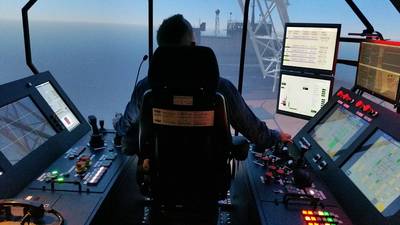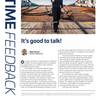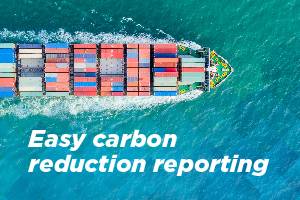How Are Advances in Simulation Shaping the Future of Maritime Training?
An increasing demand for safety and sustainability in the maritime industry has been instrumental in the advancement of simulation technology, which is revolutionizing maritime training by providing immersive, cost-effective, and risk-free learning experiences.
Although simulation training has been used in the maritime industry for several decades, early simulation technologies were very basic compared to the sophisticated systems available today. The development of computer-based simulation technology in the latter half of the 20th century revolutionized maritime training. Maritime academies and training centers started adopting computerized simulators to create more realistic training environments. These simulators replicated ship handling, navigation, engine operations, and various emergency scenarios.
Over time, advancements in computing power, graphics rendering, and simulation software have led to the creation of highly sophisticated maritime simulators capable of replicating the intricacies of real-world maritime operations with remarkable accuracy. Modern maritime simulators, like Kongsberg Digital’s K-Sim, feature full-scale bridge mock-ups, realistic visuals, dynamic weather conditions, and interactive scenarios.
“Today’s simulation technology delivers a high level of accuracy, making it ideal for feasibility studies and pre-mission planning. It can also be used for research projects that include autonomous vessel operations, port development, fuel economy improvement, accident investigations, and human factor studies,” said Terje Heierstad, Business Development Director Maritime Simulation Kongsberg Digital.
Autonomous and remote vessel operations
Advanced simulation technology is used for a range of virtual prototyping, testing real autonomous control systems, and running “what if” scenarios to check operational possibilities and limitations. Simulators are also used to support class approval of autonomous vessels as well as training remote-control center operators.
“Our K-Sim technology supports multiple aspects of autonomous vessel development,” Heierstad said. “International projects like the Horizon 2020 Autoship initiative is a pioneering and virtual testbed for autonomous technology and a research tool for training staff in new remote-control centers such as the recently opened Massterly Remote Operations Centre (ROC) in Horten, Norway. K-Sim technology has been used in several university studies related to autonomy.”
 Maritime simulators can be a useful tool for engineering studies (Credit: Kongsberg Digital)
Maritime simulators can be a useful tool for engineering studies (Credit: Kongsberg Digital)
Developing better ports and fairways
Simulation technology is widely used in the optimization and expansion of existing ports and in the building of news ones. Developers can test port and fairway designs to study how vessels can operate within the prospective new environment in more detail. Simulating ports and fairways along with different vessels’ hydrodynamic effects tends to provide numerous insights about design at vital, early stages of a development project. All these efforts serve to help increase safety, boost operational efficiency, save time, and reduce expenses later.
AMC Search’s Simulations Manager, Matt Best, said that simulations allow real-world ship operators to test a new port or wharf concept before anything is built. “Maritime simulations have long been used for training and operations for new ports. But by the time a port has been developed, it’s often too late to rectify any shortcomings in its design,” he said. “The main advantage of using a simulator to evaluate a design at the concept stage is you can bring in those seafarers who will ultimately be operating vessels in the new port. By involving real ship operators, port or wharf designs can then be proven to work — or be amended before it is too late and costly re-designs are required.”
 Simulation technology is widely used in the optimization and expansion of ports and fairways. (Credit: Kongsberg Digital)
Simulation technology is widely used in the optimization and expansion of ports and fairways. (Credit: Kongsberg Digital)
Fuel efficiency and emissions reduction
If you want to better understand any given vessel’s fuel consumption or emissions, a simulator can support decisions around fuel-type selection and power management configuration based on operational scenarios. Some simulator models include a detailed Sankey diagram that helps calculate and/or forecast various emissions. For detailed studies, the simulator features APIs, to access parameters internally in the calculations. This way, you can access all parameters and possible change parameters in the engine processes supporting various types of research.
Kongsberg’s K-Sim Navigation has been used in several studies to optimize fuel consumption by focusing on fuel-economic sailing. For example, in one study, a client achieved a 10% reduction in fuel consumption by training the crew in the navigation simulator to operate the vessel more economically.
 A simulator can support decisions around fuel-type selection and power management configuration based on operational scenarios. (Credit: Kongsberg Digital)
A simulator can support decisions around fuel-type selection and power management configuration based on operational scenarios. (Credit: Kongsberg Digital)
“Ship zero” studies and training
Training simulators facilitate virtual prototyping of a vessel, which can include the corresponding ship’s bridge, engine room, and engine control room. This enables the crew to be fully trained and prepared before the vessel is deployed and be ready to operate from day one. Some concepts and marine operations are impossible to train for in real life due to risk or environmental impact, like for example advanced oil spill scenarios.
Simulators such as K-Sim Navigation enables the operation to be optimized and crew to be fully trained in a simulated environment, so they can be prepared for various oil spill and oil spill collection scenarios, even when they haven’t been able to train with a real vessel.
 (Credit: Kongsberg Digital)
(Credit: Kongsberg Digital)
Anne-Mette Trebbien, Lecturer at the Aarhus School of Marine Engineering participated in Kongsberg Digital’s Maritime Simulation Conference in Singapore in September 2023. She returned to Denmark with a profound understanding of the challenges facing the maritime sector.
“The conference highlighted how a well-functioning learning environment that successfully integrates theory and practice is key to preparing students to become key players in the global maritime sector,” Trebbien said.
“Through the use of virtual reality and detailed data processing, Kongsberg Digital creates realistic digital replicas of existing ships, providing a solid foundation for students' understanding of systems and processes on board ships.
“The opportunity to practice is essential for acquiring new skills. Outside of school, students can access simulator models from their home computers, where they can continue to train in a full-mission engine room simulator.”
 “The opportunity to practice is essential for acquiring new skills.” - Anne-Mette Trebbien, Lecturer at the Aarhus School of Marine Engineering (Credit: Kongsberg Digital)
“The opportunity to practice is essential for acquiring new skills.” - Anne-Mette Trebbien, Lecturer at the Aarhus School of Marine Engineering (Credit: Kongsberg Digital)
The future of marine simulation
“Simulation training is an integral part of maritime education and professional development worldwide. Maritime training institutions, naval academies, shipping companies, and regulatory bodies rely on simulation technology to train seafarers, enhance their skills, and ensure safe and efficient maritime operations,” Heierstad said.
“The ongoing evolution of simulation technology continues to shape the future of training in the maritime industry, offering increasingly immersive and effective learning experiences. As these technologies continue to evolve, the industry can expect to see even further improvements in training effectiveness, safety, and operational efficiency,” Heierstad concluded.
 “The ongoing evolution of simulation technology continues to shape the future of training in the maritime industry, offering increasingly immersive and effective learning experiences.” - Terje Heierstad, Business Development Director – Maritime Simulation, Kongsberg Digital. (Credit: Kongsberg Digital)
“The ongoing evolution of simulation technology continues to shape the future of training in the maritime industry, offering increasingly immersive and effective learning experiences.” - Terje Heierstad, Business Development Director – Maritime Simulation, Kongsberg Digital. (Credit: Kongsberg Digital)














